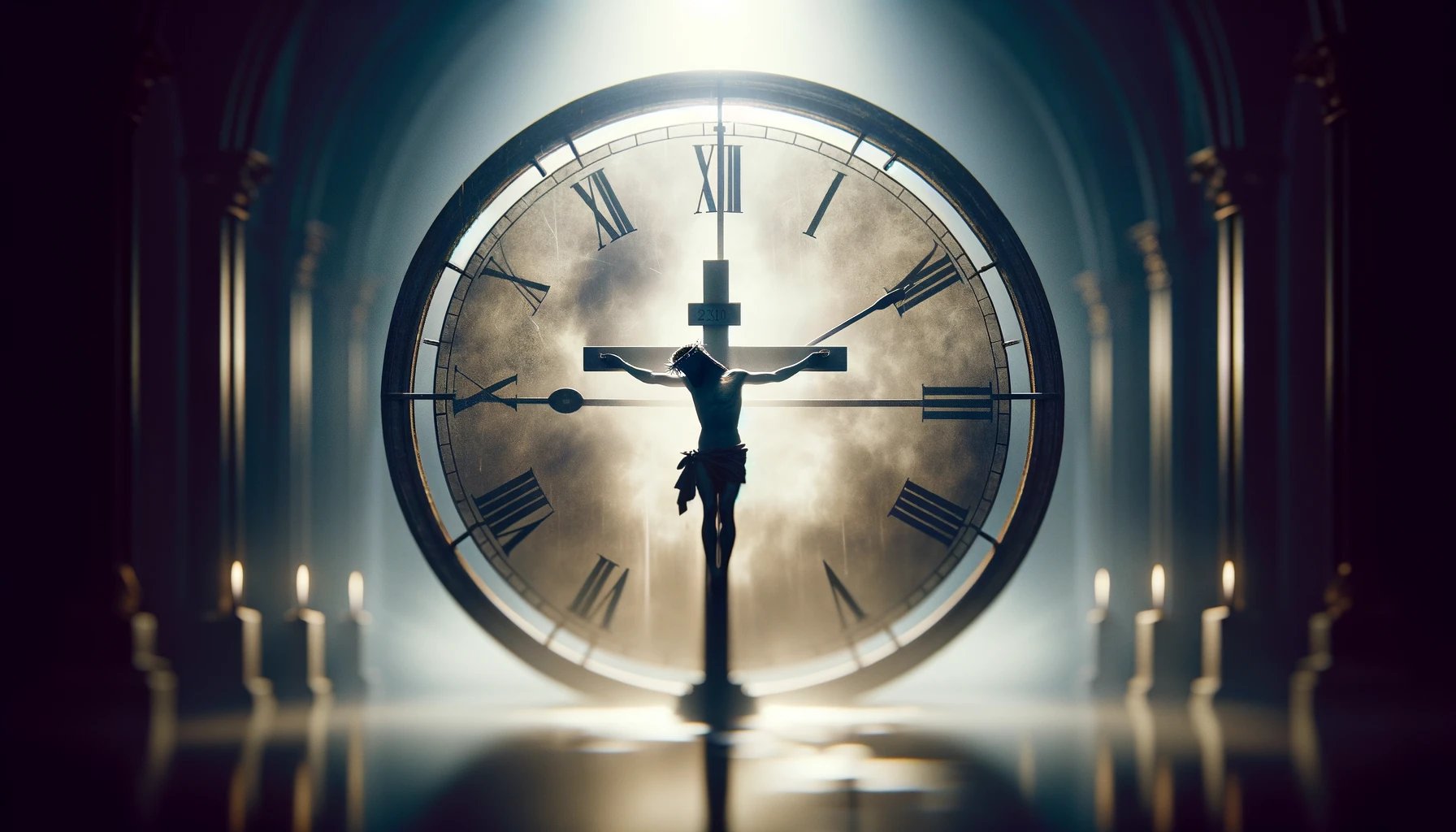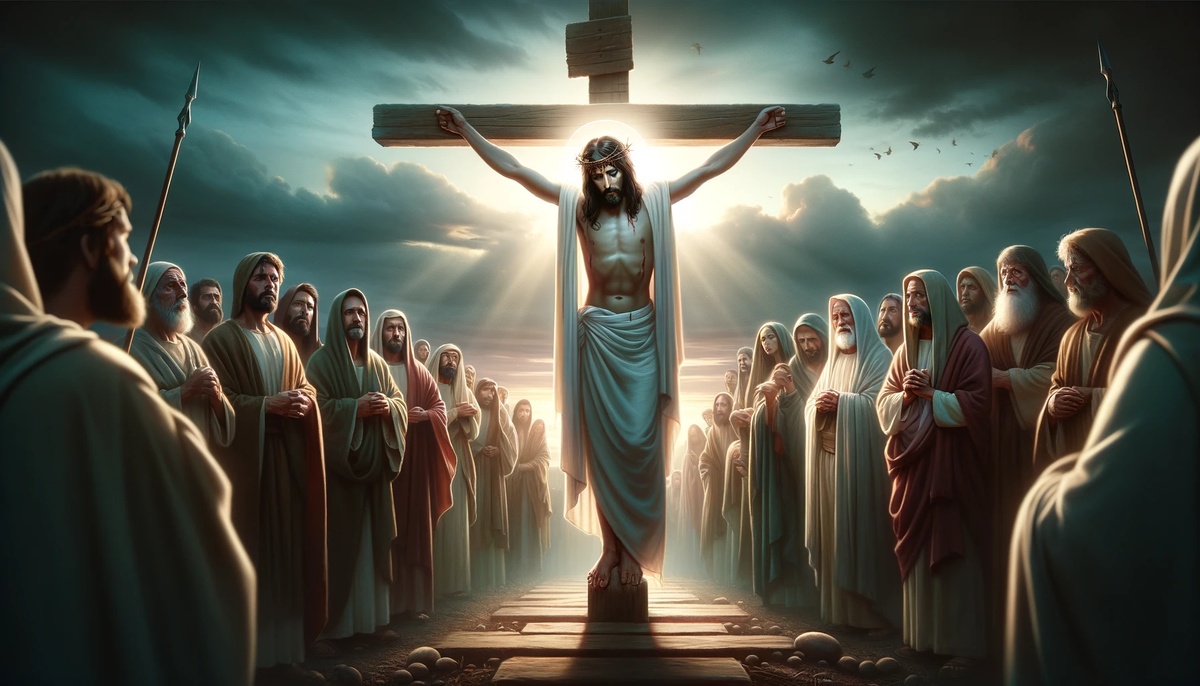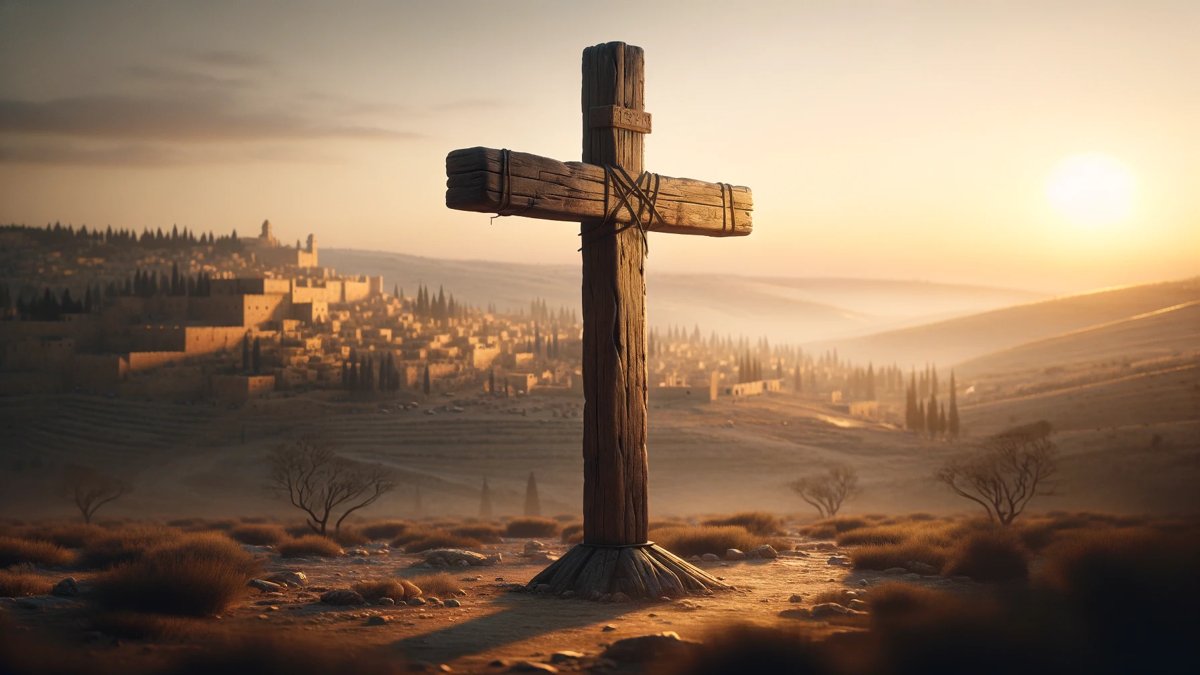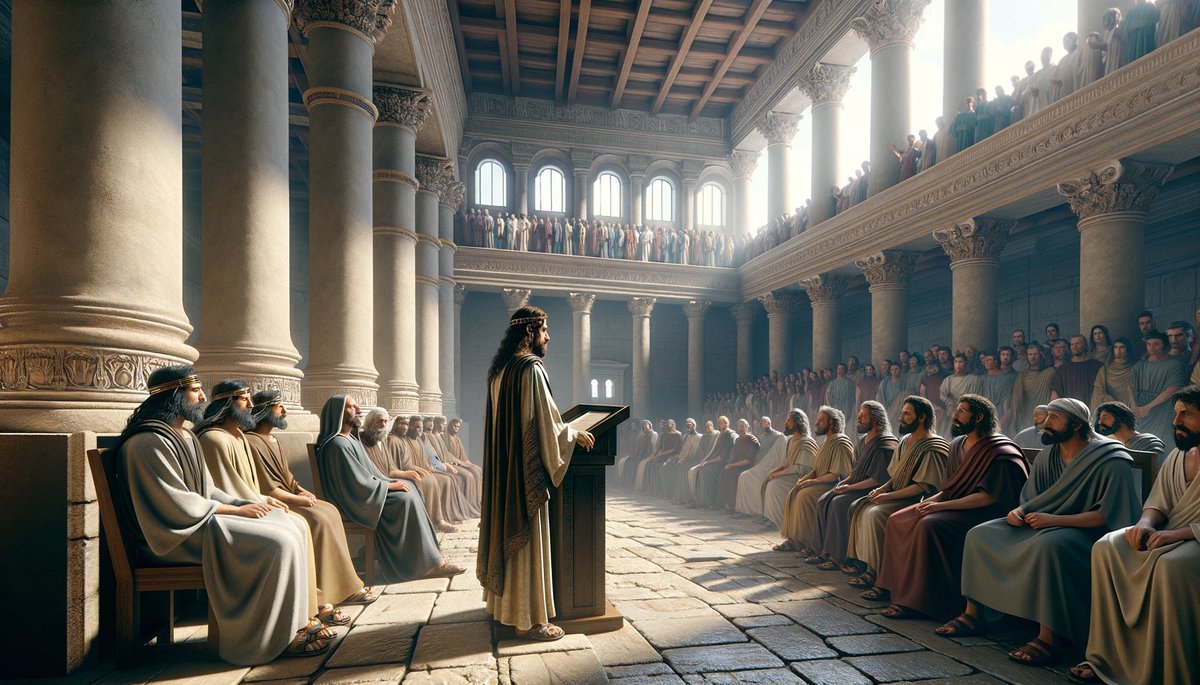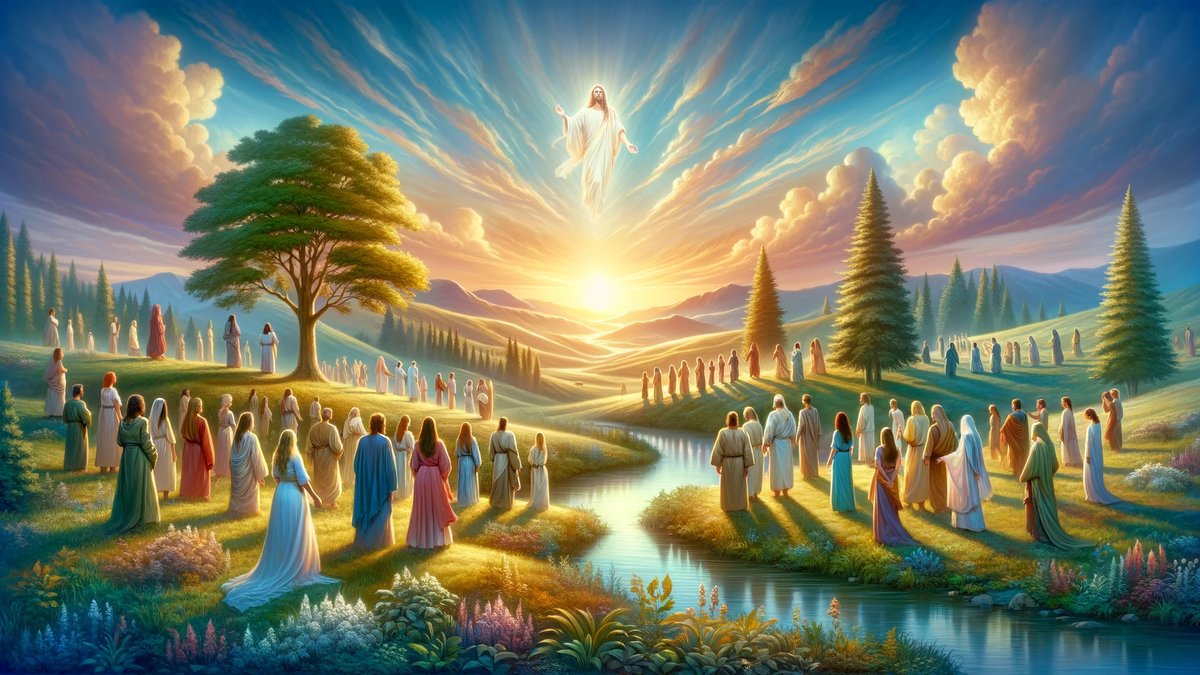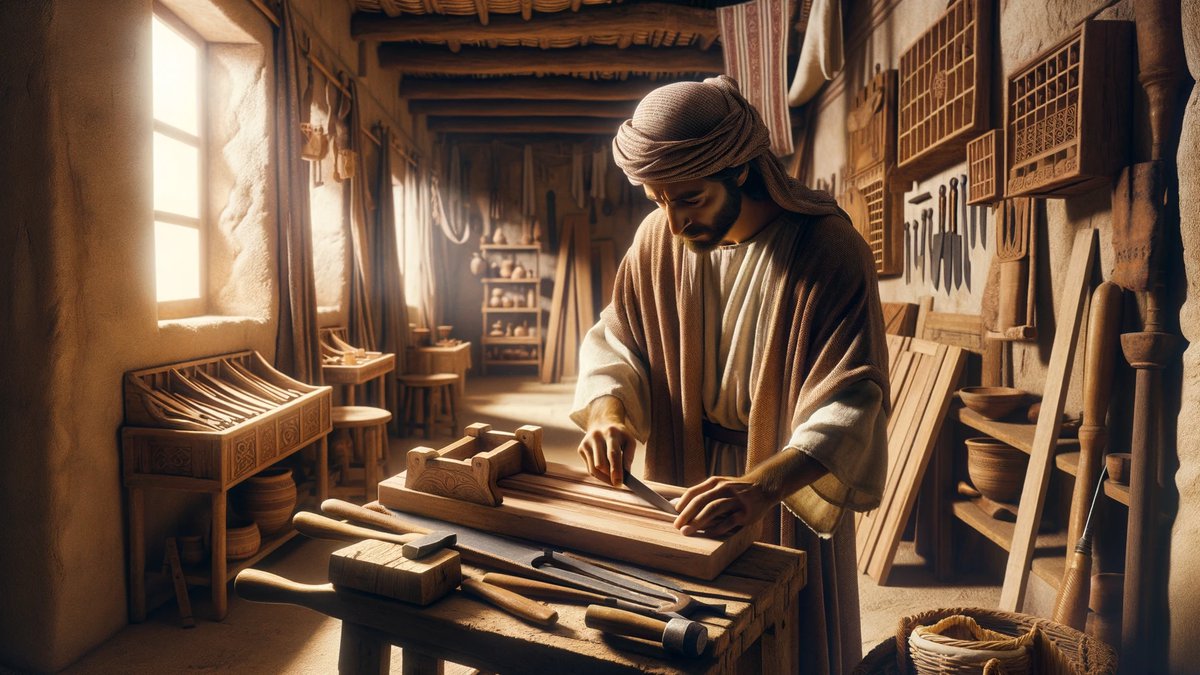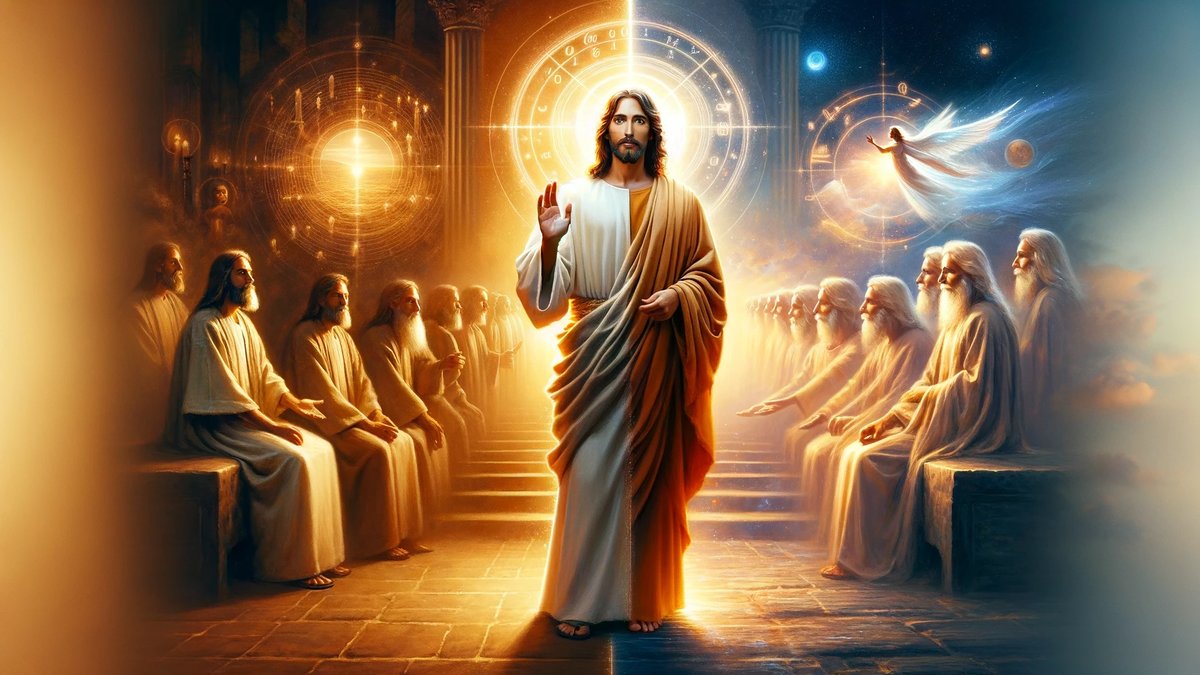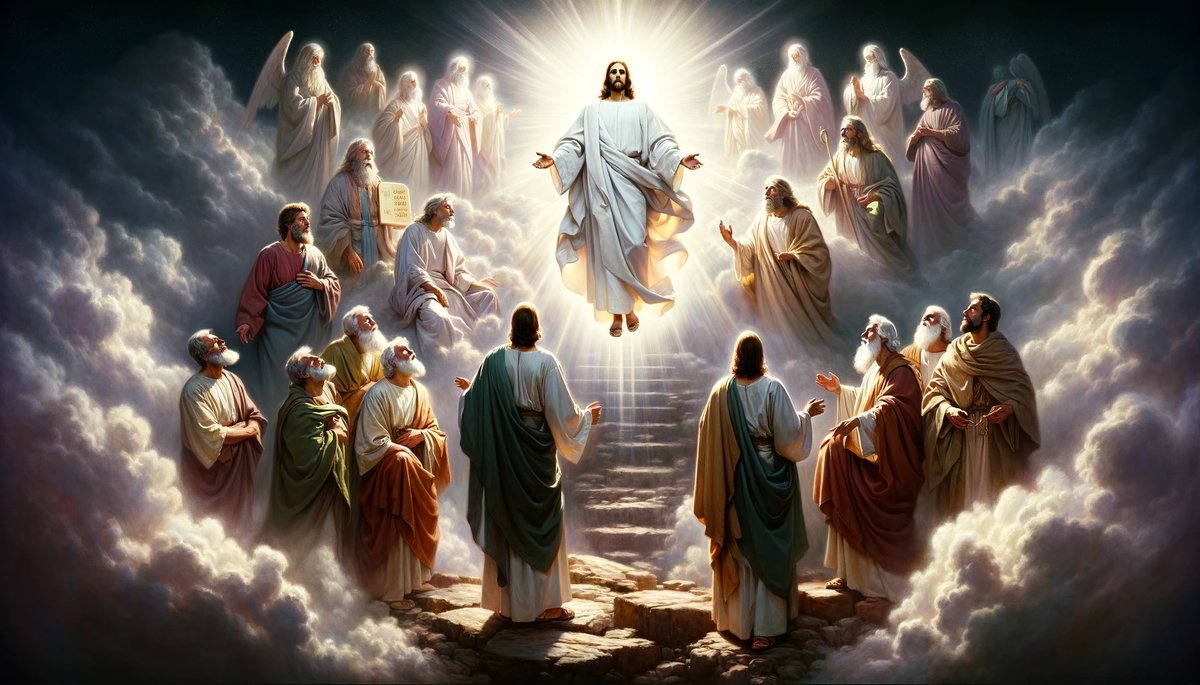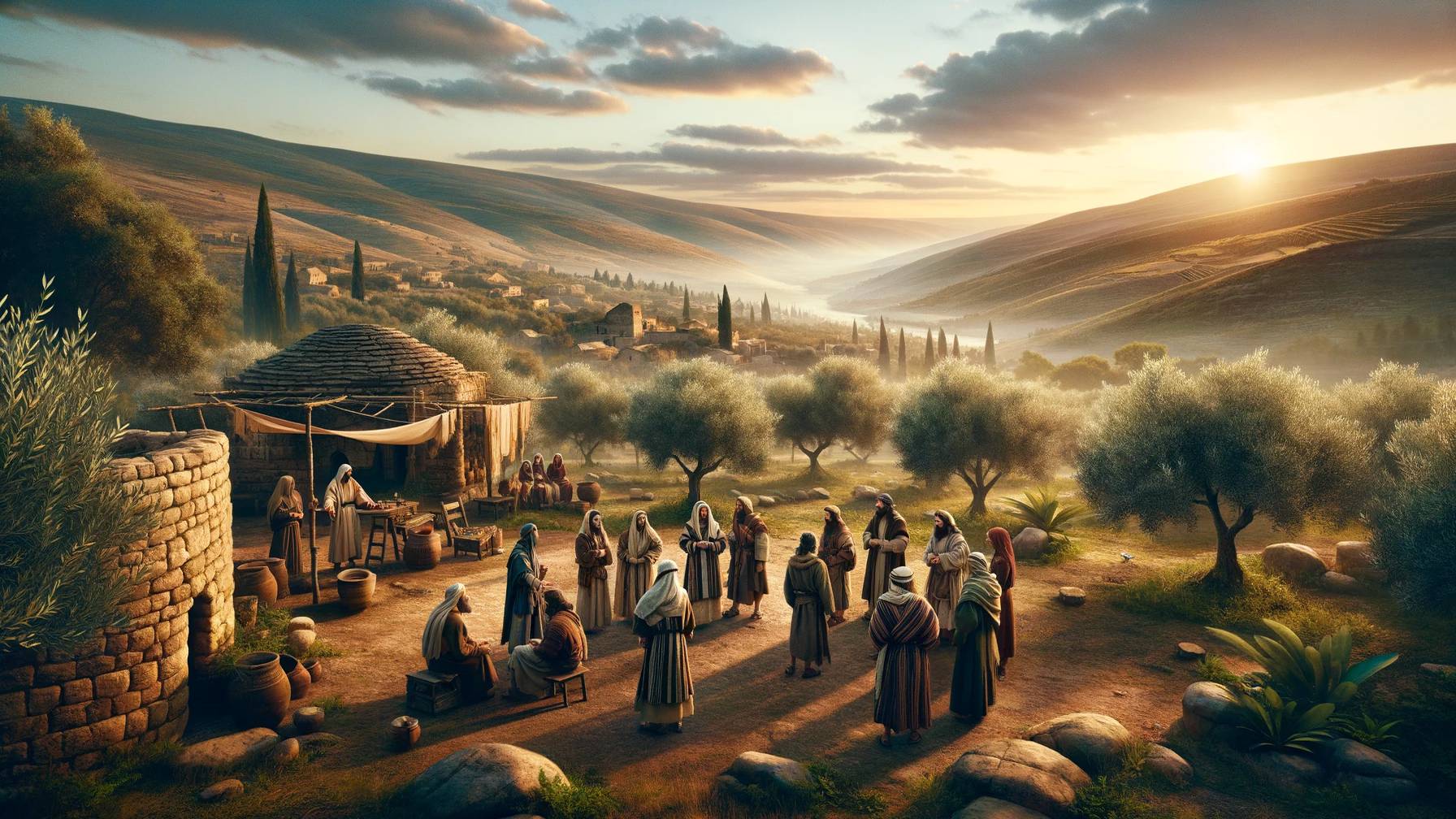Home>Christian Videos>Bible Stories>In What Year Was Jesus Christ Crucified
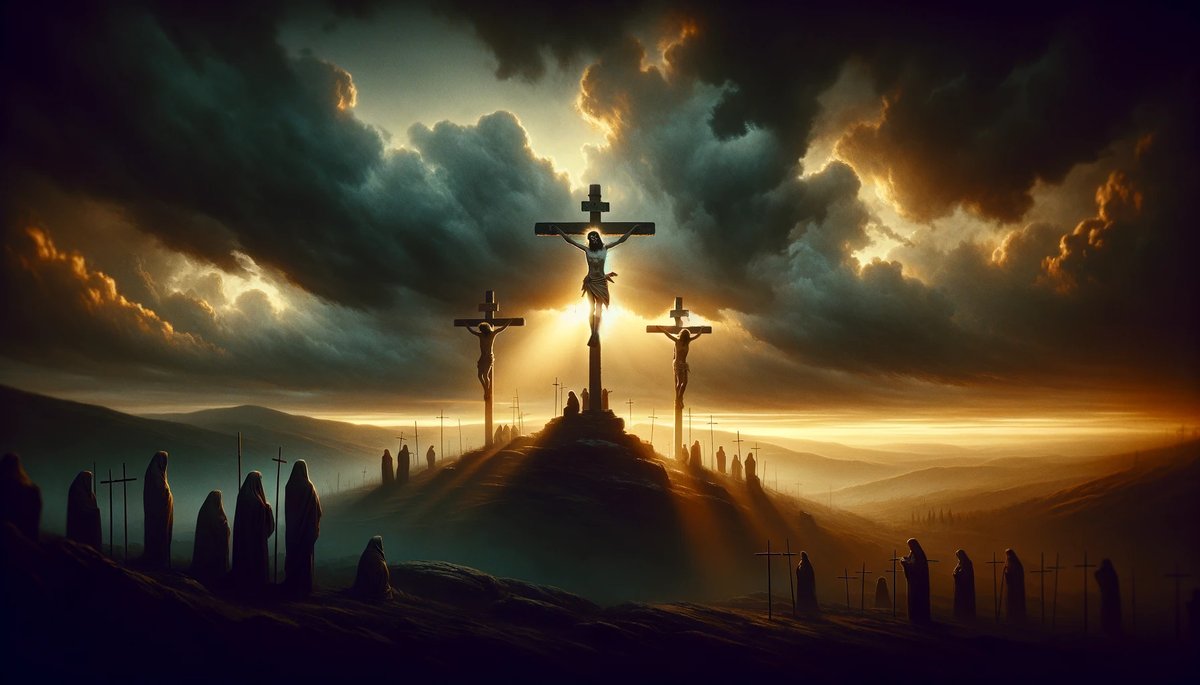

Bible Stories
In What Year Was Jesus Christ Crucified
Published: March 3, 2024
Peter Smith, Editorial Director at Christian.net, combines deep insights into faith, politics, and culture to lead content creation that resonates widely. Awarded for his contributions to religious discourse, he previously headed a major organization for religious communicators, enhancing dialogue on faith's societal impacts.
Discover the biblical account of Jesus Christ's crucifixion and its significance in Christian faith. Explore the historical and spiritual aspects of this pivotal event.
(Many of the links in this article redirect to a specific reviewed product. Your purchase of these products through affiliate links helps to generate commission for Christian.net, at no extra cost. Learn more)
Table of Contents
Introduction
In what year was Jesus Christ crucified? This question has been a topic of much debate and speculation among scholars, theologians, and historians for centuries. The crucifixion of Jesus Christ is a pivotal event in Christian theology and understanding the precise year of this event holds significant importance in the study of Christianity. In this article, we will delve into the historical accounts of Jesus Christ's crucifixion, explore the theories and debates surrounding the year of his crucifixion, and discuss the importance of understanding the specific year in which this profound event took place.
Historical Accounts of Jesus Christ's Crucifixion
The historical accounts of Jesus Christ's crucifixion are primarily documented in the New Testament of the Bible, particularly in the four Gospels: Matthew, Mark, Luke, and John. These accounts provide detailed narratives of the events leading up to the crucifixion, the crucifixion itself, and the subsequent resurrection of Jesus Christ. According to these accounts, Jesus was crucified during the time of Pontius Pilate's governorship in Judea, under the authority of the Roman Empire. The Gospels describe the events surrounding the crucifixion, including Jesus' trial, the carrying of the cross, the crucifixion at Golgotha, and his eventual death. These accounts also depict the reactions of the disciples, followers, and onlookers, as well as the supernatural occurrences that accompanied the crucifixion, such as darkness covering the land and the tearing of the temple veil. Additionally, historical sources outside of the New Testament, such as the writings of the Jewish historian Flavius Josephus and the Roman historian Tacitus, provide further contextual evidence of the crucifixion of Jesus Christ during the first century.
The Gospels offer a comprehensive portrayal of the events leading up to and including the crucifixion of Jesus Christ. Each Gospel provides unique perspectives and details, contributing to a multifaceted understanding of this significant historical event. The Gospel of Matthew emphasizes the fulfillment of Old Testament prophecies in the crucifixion, highlighting Jesus as the promised Messiah. Mark's Gospel portrays the suffering and abandonment of Jesus, underscoring the human experience of anguish and sacrifice. Luke's Gospel emphasizes Jesus' compassion and forgiveness, even in the midst of his own suffering. John's Gospel delves deeply into the theological significance of the crucifixion, emphasizing Jesus' divine nature and the redemptive purpose of his sacrifice. Together, these accounts form a cohesive narrative of the crucifixion, offering a profound insight into the historical and spiritual dimensions of this pivotal event in Christianity.
The historical accounts of Jesus Christ's crucifixion not only provide a detailed chronicle of the events themselves but also offer profound theological and spiritual insights. The Gospels present the crucifixion as the culmination of Jesus' earthly ministry, demonstrating his unwavering commitment to fulfilling the divine purpose of redemption and salvation. The accounts of the crucifixion also underscore the profound impact of Jesus' sacrificial death on his followers and the subsequent spread of Christianity. Moreover, these historical narratives continue to shape the beliefs, practices, and traditions of Christian communities worldwide, serving as a cornerstone of faith and a source of profound inspiration. The historical accounts of Jesus Christ's crucifixion, therefore, hold immense significance in both historical and spiritual contexts, shaping the understanding of Christianity and its central figure, Jesus Christ.
Theories and Debates Surrounding the Year of Jesus Christ's Crucifixion
-
AD 30 and AD 33: One of the primary debates surrounding the year of Jesus Christ's crucifixion revolves around whether it occurred in AD 30 or AD 33. Scholars and historians have presented compelling arguments for both dates, drawing from various sources including astronomical data, historical records, and biblical chronology. Proponents of AD 30 point to the significance of the Passover and the alignment of events described in the Gospels with astronomical phenomena during that time. On the other hand, advocates for AD 33 argue that this date aligns more closely with the historical timeline of Pontius Pilate's governorship and the reign of Emperor Tiberius. The debate between these two dates continues to be a subject of scholarly inquiry and remains a point of contention among historians and theologians.
-
Lunar Eclipse Theory: Another theory that has been proposed in the quest to determine the year of Jesus Christ's crucifixion is the Lunar Eclipse Theory. This theory suggests that a lunar eclipse occurred on the night following the crucifixion, as described in the Gospel of Luke. By calculating the occurrence of lunar eclipses within the plausible timeframe of Jesus' crucifixion, proponents of this theory have attempted to pinpoint the specific year of the crucifixion. However, while this theory offers a unique astronomical perspective, it has also sparked debates regarding the interpretation of ancient astronomical records and the precise correlation of celestial events with historical events.
-
Historical and Chronological Considerations: Beyond astronomical and biblical evidence, scholars have delved into historical and chronological considerations to ascertain the year of Jesus Christ's crucifixion. This includes examining the reigns of Roman emperors, the governorship of Pontius Pilate, and the dating of Passover festivals during the first century. Additionally, the synchronization of events described in the Gospels with known historical occurrences has been a focal point of analysis in determining the year of the crucifixion. These historical and chronological investigations have given rise to diverse perspectives and interpretations, contributing to the complexity of the debate surrounding the precise year of this pivotal event in Christian history.
-
Theological Implications: The debate over the year of Jesus Christ's crucifixion extends beyond historical and astronomical inquiries and carries significant theological implications. The determination of the year of the crucifixion influences the interpretation of biblical prophecies, the understanding of the timing of Jesus' redemptive mission, and the correlation of historical events with the divine plan of salvation. As a result, the theological dimensions of this debate intersect with historical and astronomical analyses, shaping the broader discourse on the crucifixion of Jesus Christ and its profound significance within Christian theology.
-
Continued Inquiry and Dialogue: The ongoing dialogue and scholarly inquiry surrounding the year of Jesus Christ's crucifixion reflect the enduring interest and significance of this historical event. While diverse theories and debates persist, the pursuit of understanding the precise year of the crucifixion underscores the interdisciplinary nature of historical and theological studies. As scholars continue to engage in rigorous research and dialogue, the quest to unravel the mystery of the year of Jesus Christ's crucifixion remains an enduring subject of academic and theological exploration.
In the quest to determine the year of Jesus Christ's crucifixion, scholars and theologians have engaged in multifaceted inquiries, drawing from historical, astronomical, and theological perspectives. The debates and theories surrounding this pivotal event exemplify the enduring interest and significance of understanding the historical and spiritual dimensions of Jesus' crucifixion.
The Importance of the Year of Jesus Christ's Crucifixion
-
Chronological Significance: Understanding the specific year of Jesus Christ's crucifixion holds immense chronological significance in the study of Christian history. It provides a foundational anchor for tracing the timeline of Jesus' ministry, the spread of early Christianity, and the historical context in which pivotal events unfolded. By pinpointing the year of the crucifixion, scholars and historians can construct a more comprehensive chronology of the life and impact of Jesus Christ, shedding light on the historical development of Christian faith and its enduring influence.
-
Biblical Prophecy Fulfillment: The precise year of Jesus Christ's crucifixion is intricately linked to the fulfillment of Old Testament prophecies concerning the coming of the Messiah. The alignment of historical events, including the crucifixion, with prophetic utterances carries profound theological significance in Christian belief. Therefore, determining the year of the crucifixion contributes to the broader understanding of how Jesus' life and mission fulfilled the scriptural promises, reinforcing the foundational tenets of Christian faith and the continuity of divine providence throughout history.
-
Theological and Soteriological Implications: The year of Jesus Christ's crucifixion holds significant theological and soteriological implications, shaping the understanding of the redemptive purpose of Jesus' sacrifice. It delineates the temporal unfolding of God's salvific plan, emphasizing the precise timing of Jesus' atoning death and resurrection. This temporal dimension of the crucifixion is intricately woven into Christian soteriology, elucidating the profound impact of Jesus' sacrificial act on the reconciliation of humanity with God. Therefore, discerning the specific year of the crucifixion enriches theological reflections on the nature of salvation and the divine intervention in human history.
-
Historical Context and Cultural Impact: The year of Jesus Christ's crucifixion provides valuable insights into the historical context and cultural impact of this pivotal event. It allows for a deeper exploration of the political, social, and religious dynamics of the time, illuminating the interactions between Jesus and the prevailing cultural milieu. By situating the crucifixion within its historical framework, scholars can discern the broader implications of Jesus' life and teachings within the context of first-century Judea, contributing to a more nuanced understanding of the cultural resonance and transformative influence of Jesus' ministry.
-
Foundational Pillar of Christian Faith: Ultimately, the year of Jesus Christ's crucifixion serves as a foundational pillar of Christian faith, underpinning the central narrative of redemption and the core beliefs of Christianity. It anchors the historical reality of Jesus' sacrificial death and resurrection, shaping the collective memory and theological consciousness of Christian communities worldwide. As such, the determination of the year of the crucifixion not only enriches scholarly inquiries but also reinforces the enduring significance of Jesus' redemptive work as the cornerstone of Christian faith and identity.
In summary, the importance of discerning the year of Jesus Christ's crucifixion extends far beyond mere historical curiosity. It encompasses theological, soteriological, and cultural dimensions, enriching the understanding of Christian faith and the enduring impact of Jesus' life and mission. Therefore, the quest to unravel the mystery of the specific year of the crucifixion remains a vital pursuit in the study of Christianity and its foundational beliefs.
Conclusion
The year of Jesus Christ's crucifixion stands as a pivotal enigma that continues to captivate the minds of scholars, theologians, and historians. The historical accounts of the crucifixion, the debates surrounding its precise year, and the profound importance of discerning this specific date collectively underscore the enduring significance of this pivotal event in Christian history. As scholars engage in rigorous inquiries, drawing from diverse disciplines and perspectives, the quest to unravel the mystery of the year of Jesus Christ's crucifixion remains an enduring subject of academic and theological exploration. Ultimately, the determination of this significant year not only enriches historical understanding but also illuminates the theological, soteriological, and cultural dimensions of Jesus' redemptive mission, reinforcing the foundational tenets of Christian faith and identity. Therefore, the pursuit of discerning the year of Jesus Christ's crucifixion stands as a testament to the enduring impact and significance of this profound event in shaping the course of human history and faith.
